The number of migrant workers in Taiwan has grown over the last ten years, but the composition of this workforce has changed significantly, with predominance shifting from men to women and from manual labor to household service, according to Migrant Workers in Taiwan. Once segregated on building sites and factories, more migrant workers now serve as home help and come into direct contact with mainstream Taiwanese society. The hiring of foreign home help has led to a host of issues related to worker welfare, from inhumane work hours to virtual imprisonment by employers who want to get the most out of the product they have “purchased.” Alex Wolfgram, a former graduate student in Sociology at National Chengchi University, believes that at least some problems arise from the distorted facts supplied by private labor brokers, and has recently embarked on a project to make a documentary about this situation.
“We are trying to take a middle stance on this, looking at it from neither the Taiwanese nor the migrant labor perspective. We want to hear both sides,” Wolfgram said. “We are not the first to look at this issue, but I feel that capturing these workers’ stories and their feeling [about their circumstances], as well as the Taiwanese perspective, in a film, is a way that people can relate to. It makes the situation more comprehensible.” Wolfgram is currently trying to raise funds to continue the project, which he hopes will eventually grow into a full-length documentary.
The project grew out of Wolfgram’s work at National Chengchi University, but has since taken on a life of its own as he discovered how different life could be for other foreign residents, specifically for the Filipino workers he saw around his apartment near Wan Fang Hospital.
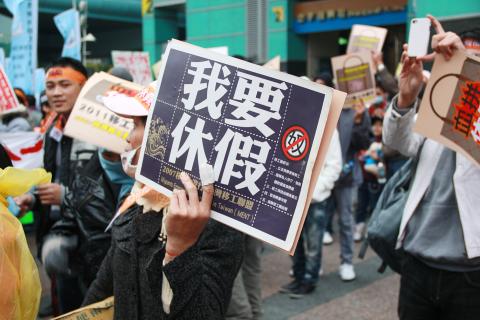
Photo Courtesy of Alex Wolfgram
“I saw the migrant workers pushing old people around in wheelchairs. I was teaching English at the time and was facing some hassles; there was a whole lot of really weird bureaucracy going on in terms of allowing foreigners to stay here and what was possible and all the loopholes Taiwanese would go through to let foreigners teach kindergarten etc. Basically, a lot of variables came together and I wanted to explore issues related to foreigners working in Taiwan.”
Speaking with a large number of migrant workers, Wolfgram was shocked to discover that many were undocumented. “I had just assumed that everybody was here like we were. But then I started interviewing and I couldn’t believe some of the stories I was hearing. They were on call 24-7, pretty much having to do a multitude of tasks, from taking care of their employers’ family to taking care of the extended family in another place and working in restaurants... I found out that they are pretty much obliged to do what they are told. They don’t want to face the consequences of getting fired because there are penalties and fees that have to be paid. I realized that there were a lot of issues going on here with this privatized labor trade, and that there was not enough in the Taiwan Labor Standards [Act] that could ensure the rights of migrant workers. Time off and benefits are now pretty much dictated by the employer,” said Wolfgram, who believes it is these conditions that have led to the creation of a large floating population of migrant workers.
“I know in Taipei many people see migrant workers out and about, and assume that there is no problem. We are not so much concerned about these as the ones in other parts of Taiwan, especially in rural areas. There is a huge floating population that does not meet the eye. Most start off as domestic workers, but then they drift [illegally] into the restaurant business, or even massage parlors or other kinds of work... What it comes down to is the employer’s ability to dictate their lives. If anyone [were] in that position [he] would feel very helpless. We want to explore ways of creating a more healthy relationship between the migrant worker and the employer so that there is no need for this floating population, which is also not a good thing for Taiwan,” Wolfgram said.
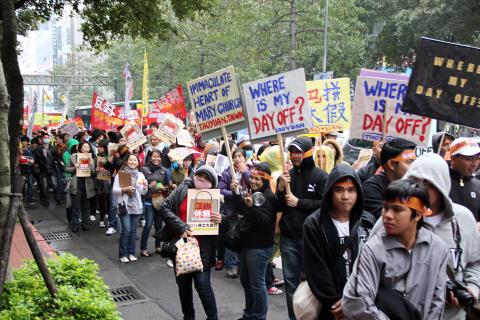
Photo Courtesy of Alex Wolfgram
Although the Taiwan government has made some effort to remedy the situation with the creation of avenues such as the Direct Hiring Service Center in 2011, Wolfgram’s own experience suggests that these services are not easily accessible to the most vulnerable among the migrant worker community, as many cannot use computers or do not have access to cell phones. Labor brokers remain the predominant channel through which workers find employment, and the very nature of this business, in Wolfgram’s view, perpetuates some of the worst abuses.
“Taiwanese employers want to get the best deal they can. For the brokers, this is a business, and they want to sell you their service, so they will tell you what the ‘product’ has to offer. ‘They are living at your home, it’s yours on demand.’ And that is a huge selling point for Taiwanese. This is the cause of the problem, because they are given this sense that the migrant workers really can do all these tasks and they may not have the judgment to say, ‘Actually this is wrong.’ They just view it as, ‘This is what I bought,’” Wolfgram said.
Wolfgram wants to make additional trips to the Philippines and understand where the workers come from, what Taiwan brings to their society, the application process at different agencies and following them up at a later stage with their experience in Taiwan, so as to give a more comprehensive picture of the whole process.
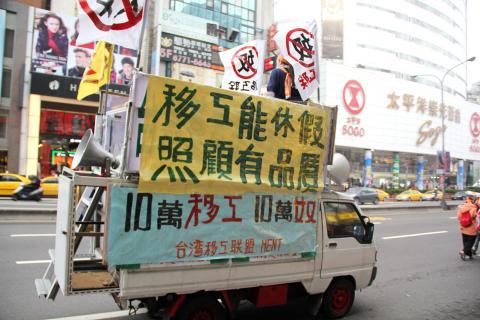
Photo Courtesy of Alex Wolfgram
Wolfgram is currently raising the NT$150,000 via the Web site Kickstarter (project name: “I Have it Maid”). He is also working with a number of NGOs and churches. Additional information about the project, including how to make a donation, can be found at www.kickstarter.com/projects/762756604/i-have-it-maid/posts.

US President Donald Trump may have hoped for an impromptu talk with his old friend Kim Jong-un during a recent trip to Asia, but analysts say the increasingly emboldened North Korean despot had few good reasons to join the photo-op. Trump sent repeated overtures to Kim during his barnstorming tour of Asia, saying he was “100 percent” open to a meeting and even bucking decades of US policy by conceding that North Korea was “sort of a nuclear power.” But Pyongyang kept mum on the invitation, instead firing off missiles and sending its foreign minister to Russia and Belarus, with whom it
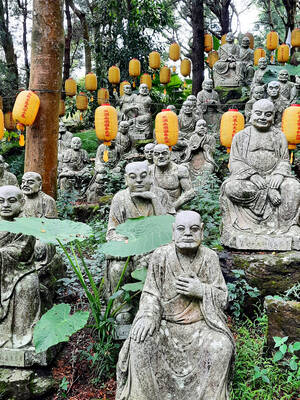
When Taiwan was battered by storms this summer, the only crumb of comfort I could take was knowing that some advice I’d drafted several weeks earlier had been correct. Regarding the Southern Cross-Island Highway (南橫公路), a spectacular high-elevation route connecting Taiwan’s southwest with the country’s southeast, I’d written: “The precarious existence of this road cannot be overstated; those hoping to drive or ride all the way across should have a backup plan.” As this article was going to press, the middle section of the highway, between Meishankou (梅山口) in Kaohsiung and Siangyang (向陽) in Taitung County, was still closed to outsiders

President William Lai (賴清德) has championed Taiwan as an “AI Island” — an artificial intelligence (AI) hub powering the global tech economy. But without major shifts in talent, funding and strategic direction, this vision risks becoming a static fortress: indispensable, yet immobile and vulnerable. It’s time to reframe Taiwan’s ambition. Time to move from a resource-rich AI island to an AI Armada. Why change metaphors? Because choosing the right metaphor shapes both understanding and strategy. The “AI Island” frames our national ambition as a static fortress that, while valuable, is still vulnerable and reactive. Shifting our metaphor to an “AI Armada”
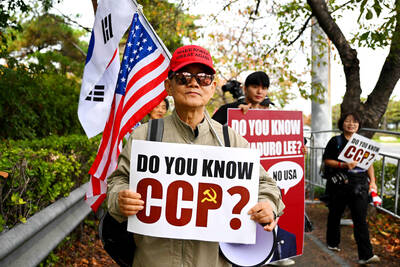
The Chinese Communist Party (CCP) has a dystopian, radical and dangerous conception of itself. Few are aware of this very fundamental difference between how they view power and how the rest of the world does. Even those of us who have lived in China sometimes fall back into the trap of viewing it through the lens of the power relationships common throughout the rest of the world, instead of understanding the CCP as it conceives of itself. Broadly speaking, the concepts of the people, race, culture, civilization, nation, government and religion are separate, though often overlapping and intertwined. A government